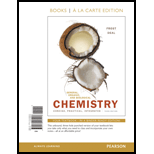
a.
To determine:
The concentration of the solution outside the cell as hypertonic or hypotonic if that solute is being transported across the cell membrane by passive diffusion.
Introduction:
Hypotonic solution: in this condition the concentration of solute is greater inside the cell than outside.
Hypertonic solution: in this condition the concentration of solutes is greater outside the cell than inside it.
Passive diffusion: diffusion moves solutes in a direction that attempts to equalize the concentration on either side of a membrane. This process does not require any additional energy, so this simple diffusion process is also called passive diffusion.
b.
To determine:
The concentration of the solution outside the cell as hypertonic or hypotonic if that solute is being transported across the cell membrane by facilitated transport.
Introduction:
Hypotonic solution: in this condition the concentration of solute is greater inside the cell than outside.
Hypertonic solution: in this condition the concentration of solutes is greater outside the cell than inside it.
Facilitated transport: small polar molecules diffuse very slowly across the nonpolar barrier found in the centre of the cell membrane. To enable small molecules and ions to pass through the cell membrane, some proteins found in the cell membrane have polar channels that open and close, allowing small polar molecules and ions to be transported across the cell membrane, to equalize the concentration gradient. These proteins are often integral membrane proteins. This type of transport is called facilitated transport and such transport does not require energy.
c.
To determine:
The concentration of the solution outside the cell as hypertonic or hypotonic if that solute is being transported across the cell membrane by active transport.
Introduction:
Hypotonic solution: in this condition the concentration of solute is greater inside the cell than outside.
Hypertonic solution: in this condition the concentration of solutes is greater outside the cell than inside it.
Active transport: some ions or small molecules must be transported across the cell membrane in the opposite direction of diffusion. Transporting ions or small polar molecules across the cell membrane in a direction opposite to equalizing concentration is possible and it also requires the assistance of a protein channel. This pumping in the opposite direction is called active transport, and it requires energy.
Want to see the full answer?
Check out a sample textbook solution
Chapter 8 Solutions
GENERAL ORGANIC+BIO...(LL)-W/MOD.ACCESS
- Explain the terms isotonic solution, crenation, and hemolysis.arrow_forwardThe specific gravity of a solution of KCl is greater than 1.00. The specific gravity of a solution of NH3 is less than 1.00. Is specific gravity a colligative property? Why, or why not?arrow_forwardHow many grams of glucose must be added to 275 g of water in order to prepare each of the following percent-by-mass concentrations of aqueous glucose solution? a. 1.30% b. 5.00% c. 20.0% d. 31.0%arrow_forward
- A pharmacist prepares an isotonic saline solution for intravenous infusion. Instead of preparing a 0.15 M solution, a 1.5 M solution is prepared. What would happen to the red blood cells if this erroneously prepared solution is infused?arrow_forwardStarch contains CC, CH, CO, and OH bonds. Hydrocarbons have only CC and CH bonds. Both starch and hydrocarbons can form colloidal dispersions in water. Which dispersion is classified as hydrophobic? Which is hydrophilic? Explain briefly.arrow_forward
 Chemistry for Today: General, Organic, and Bioche...ChemistryISBN:9781305960060Author:Spencer L. Seager, Michael R. Slabaugh, Maren S. HansenPublisher:Cengage Learning
Chemistry for Today: General, Organic, and Bioche...ChemistryISBN:9781305960060Author:Spencer L. Seager, Michael R. Slabaugh, Maren S. HansenPublisher:Cengage Learning Introductory Chemistry: An Active Learning Approa...ChemistryISBN:9781305079250Author:Mark S. Cracolice, Ed PetersPublisher:Cengage Learning
Introductory Chemistry: An Active Learning Approa...ChemistryISBN:9781305079250Author:Mark S. Cracolice, Ed PetersPublisher:Cengage Learning Chemistry: Principles and ReactionsChemistryISBN:9781305079373Author:William L. Masterton, Cecile N. HurleyPublisher:Cengage LearningChemistry: Matter and ChangeChemistryISBN:9780078746376Author:Dinah Zike, Laurel Dingrando, Nicholas Hainen, Cheryl WistromPublisher:Glencoe/McGraw-Hill School Pub Co
Chemistry: Principles and ReactionsChemistryISBN:9781305079373Author:William L. Masterton, Cecile N. HurleyPublisher:Cengage LearningChemistry: Matter and ChangeChemistryISBN:9780078746376Author:Dinah Zike, Laurel Dingrando, Nicholas Hainen, Cheryl WistromPublisher:Glencoe/McGraw-Hill School Pub Co Chemistry: The Molecular ScienceChemistryISBN:9781285199047Author:John W. Moore, Conrad L. StanitskiPublisher:Cengage Learning
Chemistry: The Molecular ScienceChemistryISBN:9781285199047Author:John W. Moore, Conrad L. StanitskiPublisher:Cengage Learning





